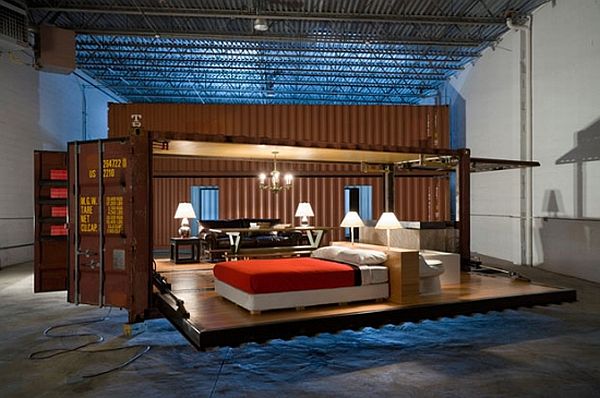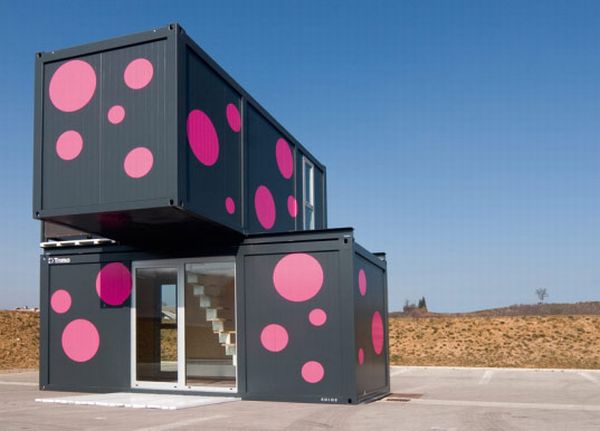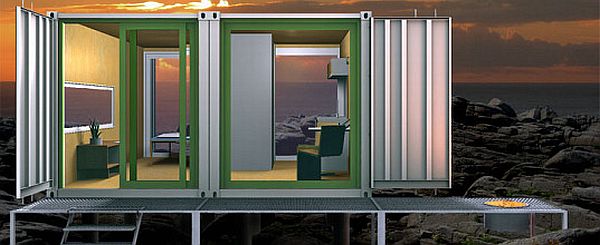
As we know it
Prefabricated homes are nothing new. Dating back to the 20th century, they have evolved into more than just houses that can be assembled and disassembled. Like always, their appeal lies in the fact that theyâre cheaper than conventional houses. Plus, they work well for those who arenât comfortable shifting from one home to another. Theyâre also Eco-friendly and are perfect for those with green souls. Whatâs great is that you can also use shipping containers and design them like a conventional home. You can make use of more than one container to create a stacked house. This in turn helps take care of the waste problem as there are many shipping containers lying unused.
For the moment, prefabricated homes made out of shipping containers are gaining in popularity. With a little imagination and plenty of tweaks, you can convert them into homes without any trace of the container look.
Need for change
The problem, however, lies in the fact that some countries and regions may require you to get a permit to construct your abode out of a container owing to zoning rules. It is also not that easy working with the material the container is made out of. Since most are done in steel, youâll need a local engineer to help you out. Temperature also becomes a problem as steel is a very good conductor of heat so it can get very hot inside during the summer months while winters will leave you freezing. Steel containers may also be coated with paints and solvents that could prove to be harmful to health. Since cargo containers are used to ferry anything and everything, there is a chance of contaminants having been spilled. Thus, there is a need for more innovative ways for people to be able to inhabit cargo containers more easily.
Whatâs next?
In an effort to make shipping container homes more attractive and viable, people have come up with newer and more modern methods to make it inhabitable. While there are still certain aspects that need to be worked on, these concepts are novel nonetheless.
1. 2+ Weekend House

The 2+ Weekend House, designed by Slovenia-based Jure Kotnik Arhitekt, has been made exclusively out of containers meant for housing. The containers used arenât recycled but are recyclable and affordable. Polka dots painted against the deep gray background lend it an air of quirkiness and fun. While it may not be for everyone, there is no denying that such usage of containers, particularly shipping containers, greatly helps reduce the trash problem.
But the 2+ Weekend House does have some drawbacks in that there isnât any mention of how clean and healthy the interiors are. It also hasnât been created to be energy efficient which poses a big problem as there are many others that attempt to factor in sustainability in terms of energy.
2. InterModal Design

This next creation by InterModal Design incorporates innovation and aesthetics. Keeping in mind that containers arenât built to house huge volumes of stuff, the creators have cleverly installed built-in furniture that can be folded into the walls. Instead of cutting up the containers to create more space, InterModal Design decided to work with the limited space available. The result is a simple and minimalistic creation that is able to provide you with the basics of living. Customers can choose from six different designs including 20-foot containers and double wide ones that house two rooms. Those who love the idea of living out of a box can also wait for more creations from InterModal Designs.
3. E-House

The last house on the list is an integration of environment consciousness and habitability. The soft and muted tones of the E-House are a sight for sore eyes. The steel walls, which are sandblasted and coated with anti-rust solutions, are cut out to fit in doors, windows and plumbing vents. The ceiling and exterior walls are then framed while mechanical and plumbing systems are later fitted into the structure. What sets the E-House apart from the rest is that it has been made to have as little carbon footprint as possible. Solar panels, electric vehicle charger, LED lighting and an organic composting machine have been installed to reduce dependency on conventional energy as well as reduce waste. The E-House is also fitted with non-toxic insulation and has a custom-made recycling center.
Like all homes, shipping containers need to encompass all that is needed to make it livable. Prefabricated containers do take necessity into consideration by attempting to install whatever is needed to convert them into homes. And while not everyone may warm to the idea in view of the work that goes into making them livable as well as the limited space issue, there is no denying that the concept is an answer for those who canât afford conventional housing.




